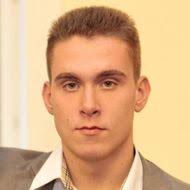HSE to Launch a Satellite into Space

By the end of 2020, HSE scientists will launch their own satellite into low Earth orbit, which will allow them to observe the Earth via the satellite’s remote sensors. To design and create the satellite, specialists and students of MIEM HSE and the HSE Lyceum worked closely with the Sputniks company, the Sirius Education Centre, and Scanex.
MIEM, which was established in 1962, participated in numerous space exploration projects during the Soviet years. In 2015, the Institute established the Laboratory of Space Vehicles and Systems' Functional Safety, where its own Mission Control Centre (MCC) for small spacecrafts was formed to receive and process data obtained in real time.
In order to create a modern cubesat, or a configuration of sophisticated and space-protected ‘smart’ elements and devices, MIEM acquired modern educational equipment developed by the Russian company Sputniks. Staff and students of MIEM and the HSE Lyceum, united by their common idea, formed a team and completed special training. The training, which was conducted with the cooperation of company specialists from the space education centre, OrbiKraft, covered the basics of development, design, assembly, testing, and operation of the apparatus. In addition, in order to practice testing the system, the team used a semi-natural modeling test bench.

The team also worked to determine what task the satellite would accomplish while in orbit. Remote sensing of the Earth was chosen as a priority task in order to monitor the ecological state of the planet's surface from space.
With this objective in mind, the team determined the configuration of the future satellite, whose main component would be a unique Russian-designed camera. Due to its extremely small size, the camera can take photos from a distance of up to 600 kilometers (the satellite’s operating altitude will be 535 km. from the Earth’s surface) with a resolution of 1280 x 960 pixels, a focal length of 70 mm., and a spatial resolution of 8 m. from an altitude of 600 km. The camera weighs 400 grams.
Over the long course of the project, the HSE undergraduates became master’s students and engineers, while the HSE Lyceum students became MIEM students. Today the team is comprised of specialists who have the skills to solve significant technical issues. In addition, the team also acquired new undergraduate and Lyceum students who enthusiastically joined in the efforts.

The MIEM cubesat will not be alone in orbit—a satellite developed by the laboratory team and schoolchildren participating in the Great Challenges Programme of the Sirius Education Centre will also be launched. The two devices were developed simultaneously and are largely identical; even the names are similar: CubeSX-HSE and CubeSX-Sirius-HSE. All telemetry reception from the satellite of the educational centre will be carried out by the MIEM Mission Control Centre of HSE University.

Dmitrii Abrameshin, Leading Engineer, Laboratory of Space Vehicles and Systems’ Functional Safety
All this time, the main apparatus in orbit was not enough to get the students into ‘battle mode.’ The development of a satellite, the subsequent real control of it, and the reception and processing of data is a wonderful opportunity to strengthen our theory and gain practical skills. Now the time has come!
The Cube is a cubesat, an ultra-small artificial Earth satellite. Its dimensions are measured in units (U), with one unit being no more than 10x10x10 cm. Today in space there are many devices sized 1U and more. Despite their small size, cubesats are complex multifunctional technical devices capable of performing a wide range of practical tasks: remote sensing of the Earth's surface and atmosphere, radar research, optical control and monitoring of the state of outer space, investigation of tether systems, and much more.
The CubeSX-HSE is a 3U small spacecraft. It is a three-unit construction. One of the units orients the device in space, the second includes all the boards for the satellite, and the third—the Earth remote sensing (ERS) camera—is reserved solely for the device’s main task of observing the Earth.
Immediately after entering orbit, the CubeSX-HSE will begin transmitting information to the Mission Control Centre, where workstations are equipped for the centre operators, which will include students among their ranks. They will oversee the general maintenance of the satellite, which includes maintaining the device’s operational control, ensuring the reception of telemetry information, and adjusting reception and transmission frequency.

The project is of particular importance for high school students. The Laboratory works actively with Moscow school programmes. The laboratory will serve as the platform for Russia’s nationwide Terra Notum competition. The competition will bring together projects developed by high schoolers in the field of engineering space systems and technologies.

Vladislav Ivanenko, General Director, Sputniks
Our cooperation with HSE University is a clear example of a partnership that is useful to all sides. On the one hand, the tasks that we have been solving together over the past several years have presented new professional challenges for the company. On the other hand, it is wonderful to see how, before our eyes and with our participation, a new important scientific area has appeared at the university, where students and even high schoolers will be able to gain the necessary and valuable practical experience of designing and controlling a satellite in real conditions during their course of study.
At present, Sputniks has successfully installed another of its developments, the Zavitok-M VHF transceiver radio station. The device provides reception of telemetry from small spacecraft and transmission of control commands to them in accordance with the regulations of amateur radio communications.

Information processing is a separate and important part of the overall process, which will be conducted in close cooperation with Scanex. HSE Lab specialists are currently completing training in the company’s training programmes.

Marina Sergeeva, Deputy General Director, Scanex
We view the students engaged in this project as future employees. Therefore, we are extremely interested in working towards a common goal and helping each other. In addition, it is interesting to work with such a rapidly developing university like HSE. You’re interested in everything! And we like this creative initiative in the educational sphere - to introduce new areas of inquiry, make new contacts, develop the labour market in a new area, and lead our graduates there. We will readily provide support for this. Collaborating with a university always presents challenges for a company. iWe understand that we do not exist separately, we create products not for ourselves, not for an abstract consumer, and that our developments and our production are evaluated by a picky first-level expert. It is a kind of nontrivial survival test.
The HSE satellite has already been assembled and is currently undergoing the critical and important stage of system-wide operability testing. Functional tests were successfully carried out at the semi-natural modeling test bench, and all service systems are working properly. After the current testing stage, the satellite must pass qualification tests and flight tests.
We wish the laboratory team good luck during this crucial period!
See also:
HSE MIEM Celebrates 60 Years at the Forefront of Electronics and Mathematics
Students, staff and graduates of the HSE Tikhonov Moscow Institute of Electronics and Mathematics (MIEM HSE), university leaders, representatives of HSE University faculties and partner companies gathered at the HSE Culture Centre on October 14 to celebrate the 60th anniversary of the institute.
Alexei Vagov: ‘Metamaterials Should Serve People'
The Centre for Quantum Metamaterials is one of the new international laboratories that will be launched at MIEM, HSE University, in 2022. Alexei Vagov, Head of the Centre, speaks about the main areas of the Centre’s research, its team, and future research cooperation.
HSE MIEM to Be Named in Honour of Alexander Tikhonov
The HSE Academic Council session of December 23, 2016 passed a resolution to name HSE MIEM after Alexander Tikhonov, and to create an Alexander Tikhonov scholarship programme.
HSE MIEM Turns 5: Here’s What It’s Done
A move to a new building equipped with modern research equipment, an increase in admission numbers, a rise in the number of articles faculty members publish in international journals – these are just a few of the achievements the HSE Moscow Institute of Electronics and Mathematics (MIEM) has made over the last five years. Throughout those years, the head of the Institute was Alexander Tikhonov, who passed away on December 9, 2016.
HSE MIEM Students Demonstrate their Developments at Nauka 0+ Science Festival
Dance with a robot, become immersed in virtual reality, mount a weather station, learn about smart home technologies and just have a good time. At Nauka 0+ Science Festival, HSE showed that scientific development can be not only useful, but also accessible to everyone.
A Virtual Tour of HSE MIEM
How does one enter into virtual reality? How many hours does it take a 3D printer to print a bust of Van Gogh? And is it true that in one of HSE’s laboratories, you can monitor low Earth orbit satellites in real time? In the newest edition of Open House, Anastasia Zaitseva and Artem Ivanov, both fourth-year students in the Informatics and Computing Technology undergraduate programme, talk about these questions and more.
Applied Physics Students Now Able to Work in Lab Created by Nobel Laureate
Students of HSE MIEM who are interested in conducting research in high-temperature superconductivity will now be able to carry out experiments using modern equipment in a new laboratory at the Lebedev Physical Institute of the Russian Academy of Sciences (LPI RAS).
Moscow Institute of Electronics and Mathematics Opens Microsatellite Control Center
HSE’s Moscow Institute of Electronics and Mathematics has opened a university Microsatellite Flight Control Center. Its main goal is to offer students practical experience with small space devices that work in near-earth orbits. It was created jointly with the company Sputniks.
Graduate of HSE Moscow Institute of Electronics and Mathematics Invents Way of Charging Devices in Buses and Metro
The Public Charger project developed by HSE MIEM graduate Alexei Rolich has been selected as one of the winners in the Start programme developed by the Foundation for the Support of Small Businesses in Science and Technology. The programme focuses on researchers who want to turn their ideas into a sustainable business. Rolich will receive a 2 million rouble grant for the first stage of development of his project.
MIEM Students Demonstrate Google Glass Analogue and Portable Cardiograph at All-Russia Science Festival
Undergraduate and postgraduate students at the HSE Moscow Institute of Electronics and Mathematics (MIEM) recently presented their innovations at the All-Russia Science Festival (NAUKA+). Among them were ‘intelligent electric outlets’, which eliminate worries about irons being left plugged in, and a device for measuring eye fatigue.


